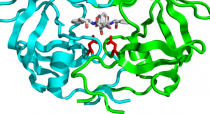The use of affinity tags has become a very useful tool when it comes to expressing proteins recombinantly , greatly facilitating their purification and detection, increasing performance and solubility on certain occasions, and even favoring the correct folding of protein in some cases.
However, in certain cases this fusion tail can interfere with the structure and / or function of the protein, when for example:
- It alters the conformation of the protein.
- It interferes with the application of the protein.
- It hinders the crystallization of the protein.
In these cases, cleavage of the fusion tail is necessary once the protein has been purified, and that is why today we bring you a protease guide for the elimination of fusion protein tags that allow obtaining pure tail-free proteins.
Protease Guide For Tag Removal
Using proteases for tag removal involves 4 basic steps:
1.- Insert the specific cleavage site of the selected protease between the tag and the sequence of the protein of interest. It is very important to ensure in this step that the sequence that defines the protease cleavage site is not repeated throughout the sequence of the protein of interest, to avoid unwanted secondary cleavages.
2.- Express and purify the recombinant protein.
3.- Add the selected protease.
4.- Separate the pure protein without the tag by chromatography.
Below you can find a list with the proteases for the removal of frequently used tags :
TEV PROTEASE
- Cleavage recognition sequence: Glu-Asn-Leu-Tyr-Phe-Gln-Gly
- Cutting site: before Glycine
- Molecular weight: 27kDa
- Other considerations: Among the proteases for tag removal, this is the most commonly used.
HRV3C PROTEASE (HUMAN RHINOVIRUS)
- Cleavage recognition sequence: Leu-Phe-Gln-Gly-Pro
- Cutting site: between Glutamine and Glycine
- Molecular weight: 22kDa
- Other considerations: You can also use its variant attached to GST (PreScission protease).
THROMBIN
- Cleavage recognition sequence: Leu-Val-Pro-Arg-Gly-Ser
- Cutting site: between Arginine and Glycine
- Molecular weight: 37kDa
- Other considerations: it is made up of a light and a heavy chain, joined together by disulfide bridges, therefore being sensitive to reducing agents.
FACTOR XA
- Cleavage recognition sequence: Ile- (Glu or Asp) -Gly-Arg
- Cutting site: after Arginine (does not cut in case the next amino acid is Arginine or Proline)
- Molecular weight: 59kDa
- Other considerations: it consists of two chains linked by disulfide bridges, being sensitive to reducing agents. It also binds to Ca2 + ions so it should not be used in the presence of chelating agents such as EDTA.
ENTEROKINASE
- Cleavage recognition sequence: Asp-Asp-Asp-Asp-Lys
- Cutting site: after Lysine Arginine (does not cut in case the next amino acid is a Proline)
- Molecular weight: 31kDa
- Other considerations: Its activity is dependent on calcium.
Tips For The Correct Use Of Proteases For Tag Removal
- Do not exceed the recommended protease concentration, as this could cause proteolysis at secondary sites.
- Optimize temperature and incubation times
- Calcium-dependent proteases should not be used with proteins in phosphate buffer (buffer frequently used for purification of proteins with Histidine glue) as insoluble calcium phosphate could form.
